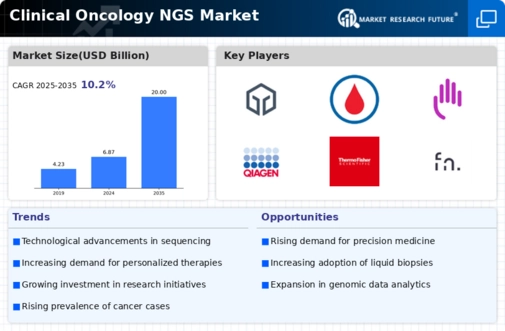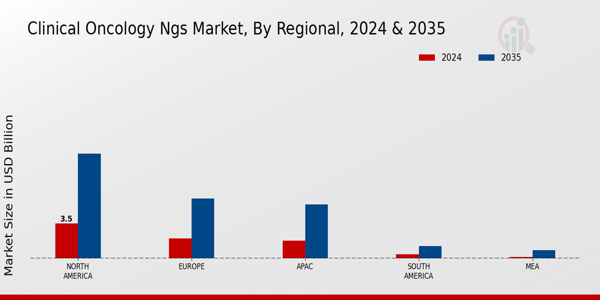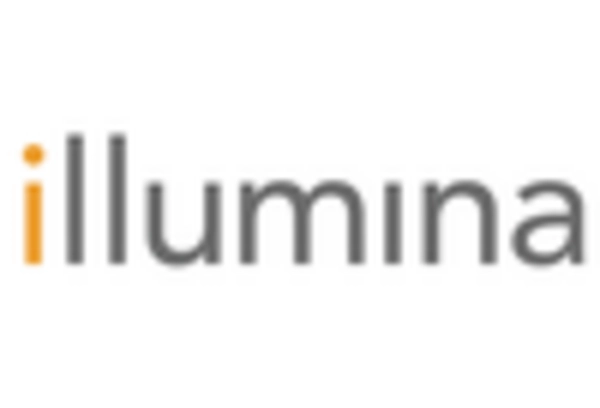Enhanced Research Funding
The Clinical Oncology NGS Market benefits from enhanced funding for cancer research initiatives. Governments and private organizations are increasingly investing in research aimed at understanding the genetic underpinnings of cancer and developing innovative therapies. This influx of funding supports the development and validation of NGS technologies, facilitating their integration into clinical practice. For example, funding for genomic research has seen a significant increase, with billions allocated to projects that utilize NGS for cancer studies. This financial support is likely to accelerate advancements in NGS applications, ultimately expanding the market as new discoveries lead to improved diagnostic and therapeutic options.
Increase in Cancer Incidence
The Clinical Oncology NGS Market is significantly influenced by the rising incidence of cancer worldwide. According to recent statistics, cancer cases are projected to increase by 70% over the next two decades, necessitating advanced diagnostic and treatment options. NGS offers a powerful tool for early detection and personalized treatment strategies, which are essential in managing the growing cancer burden. This increasing prevalence of cancer is likely to drive the demand for NGS-based solutions, as healthcare systems seek to implement more effective and efficient cancer management protocols. The market is expected to expand as healthcare providers adopt NGS technologies to improve patient outcomes.
Advancements in NGS Technology
The Clinical Oncology NGS Market is experiencing rapid advancements in next-generation sequencing (NGS) technology. Innovations such as improved sequencing accuracy, reduced turnaround times, and cost-effective solutions are driving the adoption of NGS in oncology. For instance, the introduction of ultra-high-throughput sequencing platforms has enabled the analysis of multiple genes simultaneously, enhancing the ability to identify actionable mutations. This technological evolution is expected to propel the market, as healthcare providers increasingly rely on NGS for precision oncology. The market is projected to grow at a compound annual growth rate (CAGR) of approximately 20% over the next five years, reflecting the increasing integration of NGS in clinical settings.
Regulatory Approvals and Guidelines
The Clinical Oncology NGS Market is positively impacted by the establishment of regulatory approvals and guidelines for NGS applications in oncology. Regulatory bodies are increasingly recognizing the importance of NGS in clinical decision-making, leading to the development of frameworks that support its use in diagnostics and treatment planning. For instance, recent guidelines have streamlined the approval process for NGS-based tests, making it easier for companies to bring their products to market. This regulatory support is expected to enhance the credibility and adoption of NGS technologies in oncology, thereby driving market growth as healthcare providers seek compliant and effective solutions for cancer management.
Growing Demand for Targeted Therapies
The Clinical Oncology NGS Market is witnessing a surge in demand for targeted therapies, which are designed to specifically attack cancer cells while sparing normal cells. This trend is largely driven by the increasing understanding of the genetic basis of cancer, leading to the development of therapies that are tailored to individual patient profiles. As a result, NGS plays a crucial role in identifying specific genetic mutations that can be targeted by these therapies. The market for targeted therapies is expected to reach USD 100 billion by 2026, indicating a substantial opportunity for NGS technologies to facilitate the identification of suitable candidates for these treatments.


















Leave a Comment